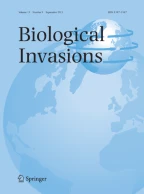Abstract
Exotic macrophytes, invertebrates and fish are found in most coastal habitats in the Mediterranean Sea. The Mediterranean Sea has been subjected to introductions of non-indigenous species by ship traffic since the opening of interoceanic maritime routes five centuries ago. The Sea, a hub of shipping, is exceptionally susceptible to invaders that arrive in fouling communities or ballast. The Suez Canal has been the largest pathway for the entry of these species: more than 300 Erythrean species – principally molluscs, fish, decapod crustaceans, polychaetes and algae – have become established in the eastern Mediterranean, primarily along the Levantine coasts. Mariculture of nonindigenous shellfish predominates in the northern Mediterranean lagoonar environments. Unrestricted transport of commercially important exotic shellfish has resulted in numerous unintentional introductions of pathogens, parasites and pest species. Some invaders have outcompeted or replaced native species locally, severely reducing biodiversity; some other invaders are so abundant they are exploited commercially. The rate of these biotic invasions has increased in recent decades, and they collectively have significant ecological and economic impacts in the Mediterranean Sea.
Similar content being viewed by others
Author information
Authors and Affiliations
Rights and permissions
About this article
Cite this article
Galil, B.S. A Sea Under Siege – Alien Species in the Mediterranean. Biological Invasions 2, 177–186 (2000). https://doi.org/10.1023/A:1010057010476
Issue Date:
DOI: https://doi.org/10.1023/A:1010057010476
